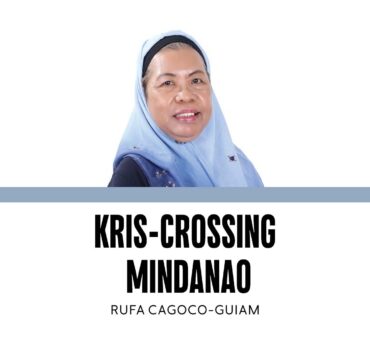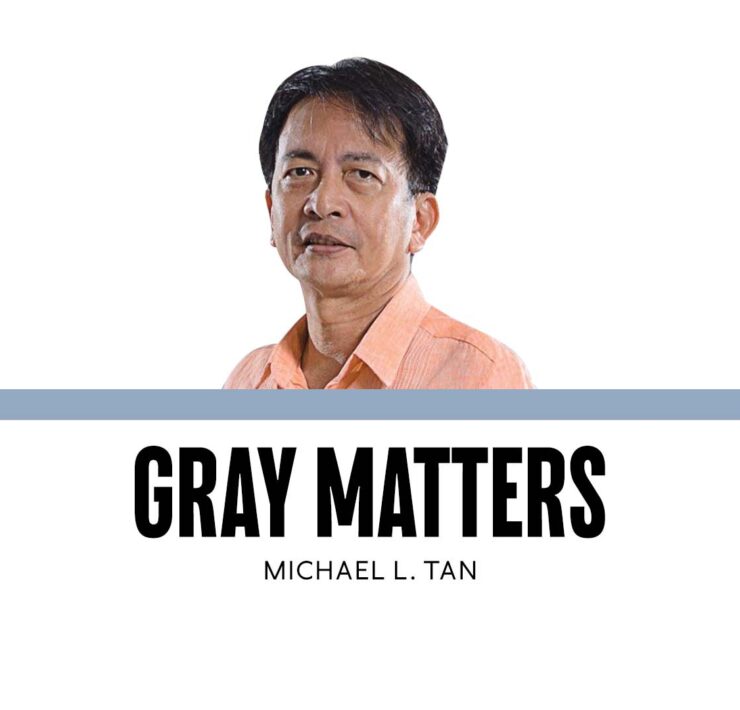Aspin

They used to be popularly called “native” or dismissed simply as “strays.” Then “askal” came into vogue, meaning asong kalye or street dog. In recent years, affected by nationalist sentiments, we got “aspin” or asong pinoy, a Filipino dog.
Last Sunday, Aug. 17, was National Aspin Day, which will probably eclipse Aug. 26, the International Day of the Dog, and that’s fine. Think globally, act locally, and today, we’ll be more local.
We’re surrounded by aspins of all sizes, shapes, and colors, and for the longest time, they were pariahs or outcasts. Others survived, even if largely homeless and ownerless, by developing an attachment to particular households and people, and were used as bantay or guard dogs, and as companions for hunting.
Somewhat favored were “purebreds” that emerged in more recent human history—dogs intentionally bred for particular functions like hunting, herding, or just plain leisure, which explains the term “lap dogs,” or dogs meant to be just carried around and played with.
Chichi, my occasional co-columnist, is a small purebred actually intended as a hunter (not to be eaten, as some people think, notwithstanding its resemblance to sausages and hot dogs). Their long bodies and short legs allow them to dig quickly and deeply into the soil for badgers, which live underground.
There are now genetic studies on dog breeds and their “freelance” counterparts in the streets. Geneticists refer to these populations as “village dogs,” referring to the rural origins of many of these dogs, although the urban ones probably now outnumber their country cousins.
The genetic studies are amazing, resulting in “family trees” that map out relationships of village dogs in different parts of Asia. We know now that the ancestors of our village dogs today may go back some 15,000 years ago, descendants of wild wolves arriving in Central Asia and migrating to East Asia (China) and then to Southeast Asia and the Pacific.
I love the studies that show how humans, wolves, and dogs co-evolved. Even the dingos or wild dogs of Australia were part of the family trees. One family tree that has been published shows Philippine village dogs to be related to the ones in Bali.
Now, how did that happen? Are we talking about dog tourism?
We certainly had human populations moving around, Austronesians especially—a big human family that includes today’s southern Chinese, Filipinos, Indonesians, and people of the South Pacific—and, as they migrated by land and by sea, they brought along dogs. Ian Alfonso’s wonderful “Dogs in Philippine History” devoted several pages to these genetic studies, even as he had a book cover that included one illustration showing a dog, a village dog, sitting at the helm of the boat and looking very much like the captain.
Reaching land, these pioneering dogs were freewheeling, having favorite humans and human households, but most of the time, they were free spirits. Nature intervened as the dogs reproduced, particular traits being “chosen” by nature for their survival value. These village dogs tended to be long-legged and thin, traits good for the wild, allowing speed and agility.
If you have aspins, look at them and appreciate how they evolved. If they’re on the stockier side, it may be from Western breeds, actually less healthy because they’re overweight, and because all the inbreeding meant passing on certain congenital weaknesses.
Aspins tend to be feared, seen as “wild” and aggressive, but there have been studies that give a different picture. One study looked at Balinese village dogs and found they are more cautious, avoiding strangers, human or canine, and therefore increasing their chances of survival. These non-aggressive dogs also appeal to humans, who may end up adopting them.
Village dogs have also been called, in English and Chinese, landrace dogs, referring to how the land (meaning nature) chooses for traits in these dogs that are better adapted to their natural and social (especially in relation to humans) environments. That includes personality traits, for example, the hunting dogs tending to be more attached to their humans, including being able to sense (smell, especially) what’s in the hunting area.
I have three village dogs. They used to be five, but two of them, siblings, lived to be 15, passing away just a few weeks ago. They were so low-maintenance and yet every bit as affectionate, hardy, and smart (actually smarter than) purebreds.
There are so many aspins waiting for a home. Get one (or more), raise them free-spirited and, if asked what they are, create your own breed name, boasting, “Oh, it’s a mixed Village Landrace from xxx,” and you can insert your home province or hometown in there.


















